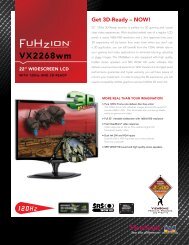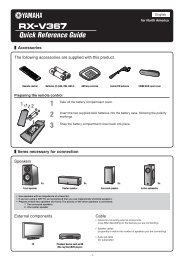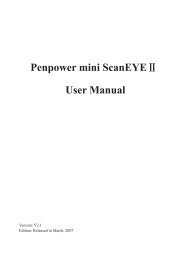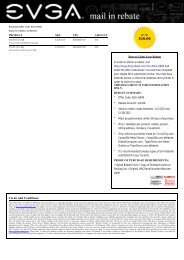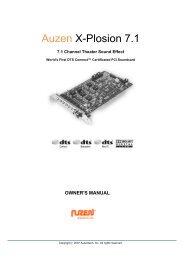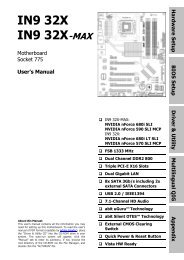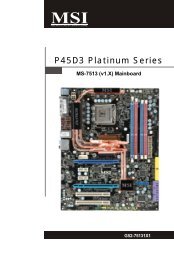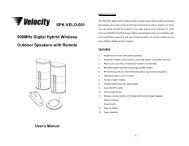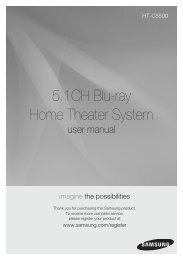HP Officejet 4500 (G510) - static.highspeedb...
HP Officejet 4500 (G510) - static.highspeedb...
HP Officejet 4500 (G510) - static.highspeedb...
Create successful ePaper yourself
Turn your PDF publications into a flip-book with our unique Google optimized e-Paper software.
Appendix D<br />
Guidelines for ensuring wireless network security<br />
This section contains the following topics:<br />
• To add hardware addresses to a WAP<br />
• Other guidelines<br />
To add hardware addresses to a WAP<br />
MAC filtering is a security feature in which a WAP is configured with a list of MAC addresses (also<br />
called "hardware addresses") of devices that are allowed to gain access to the network through the<br />
WAP.<br />
If the WAP does not have the hardware address of a device attempting to access the network, the<br />
WAP denies the device access to the network.<br />
If the WAP filters MAC addresses, then the device's MAC address must be added to the WAP's list<br />
of accepted MAC addresses.<br />
1. Print the network configuration page. For information on the network configuration page, see<br />
Understand the network configuration page (some models only).<br />
2. Open the WAP's configuration utility, and add the device's hardware address to the list of<br />
accepted MAC addresses.<br />
Other guidelines<br />
To keep the wireless network secure, follow these guidelines:<br />
• Use a password with at least 20 random characters. You can use up to 63 characters in a WPA<br />
password.<br />
• Avoid any common words or phrases, easy sequences of characters (such as all 1s), and<br />
personally-identifiable information for passwords. Always use random strings composed of<br />
uppercase and lowercase letters, numbers, and if allowed, special characters such as<br />
punctuation.<br />
• Change the password periodically.<br />
• Change the default password provided by the manufacturer for administrator access to the<br />
access point or wireless router. Some routers let you change the administrator name as well.<br />
• Turn off administrative access over wireless if possible. If you do this, you need to connect to<br />
the router with a wired Ethernet connection when you want to make configuration changes.<br />
• Turn off remote administrative access over the Internet on your router, if possible. You can use<br />
Remote Desktop to make an encrypted connection to a computer running behind your router<br />
and make configuration changes from the local computer you are accessing over the Internet.<br />
• To avoid accidentally connecting to another party's wireless network, turn off the setting to<br />
automatically connect to non-preferred networks. This is disabled by default in Windows XP.<br />
Guidelines for reducing interference on a wireless network<br />
The following tips will help reduce the chances for interference in a wireless network:<br />
• Keep the wireless devices away from large metal objects, such as filing cabinets, and other<br />
electromagnetic devices, such as microwaves and cordless telephones, as these objects can<br />
disrupt radio signals.<br />
• Keep the wireless devices away from large masonry structures and other building structures as<br />
these objects can absorb radio waves and lower signal strength.<br />
• For an infrastructure network, position the WAP in a central location in line of sight with the<br />
wireless devices on the network.<br />
• Keep all wireless devices on the network within range of one another.<br />
Uninstall and reinstall the software<br />
If your installation is incomplete, or if you connected the USB cable to the computer before prompted<br />
by the software installation screen, you might need to uninstall and then reinstall the software. Do<br />
204 Network setup (some models only)




